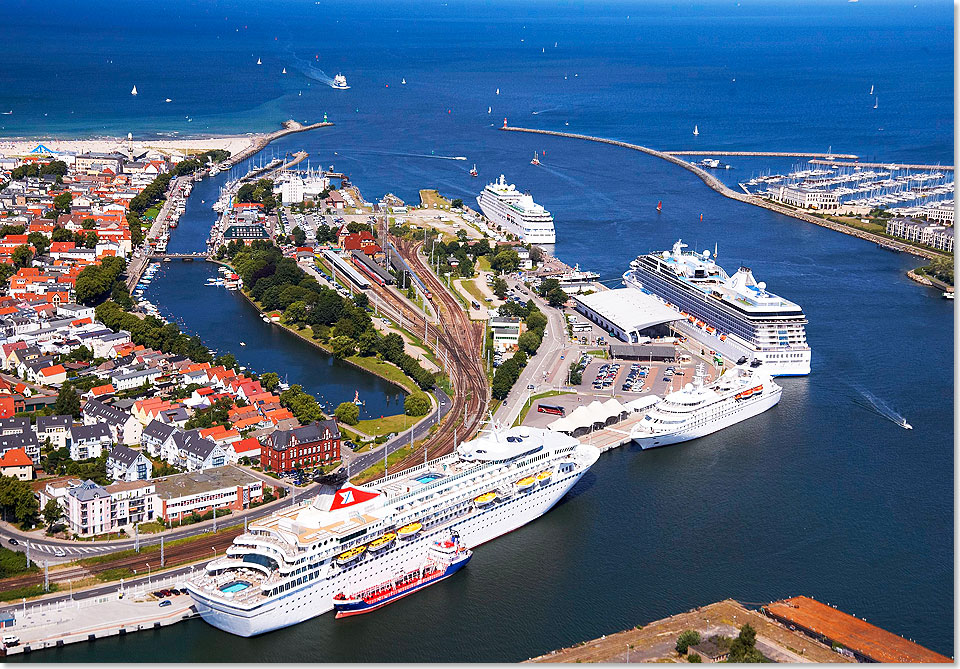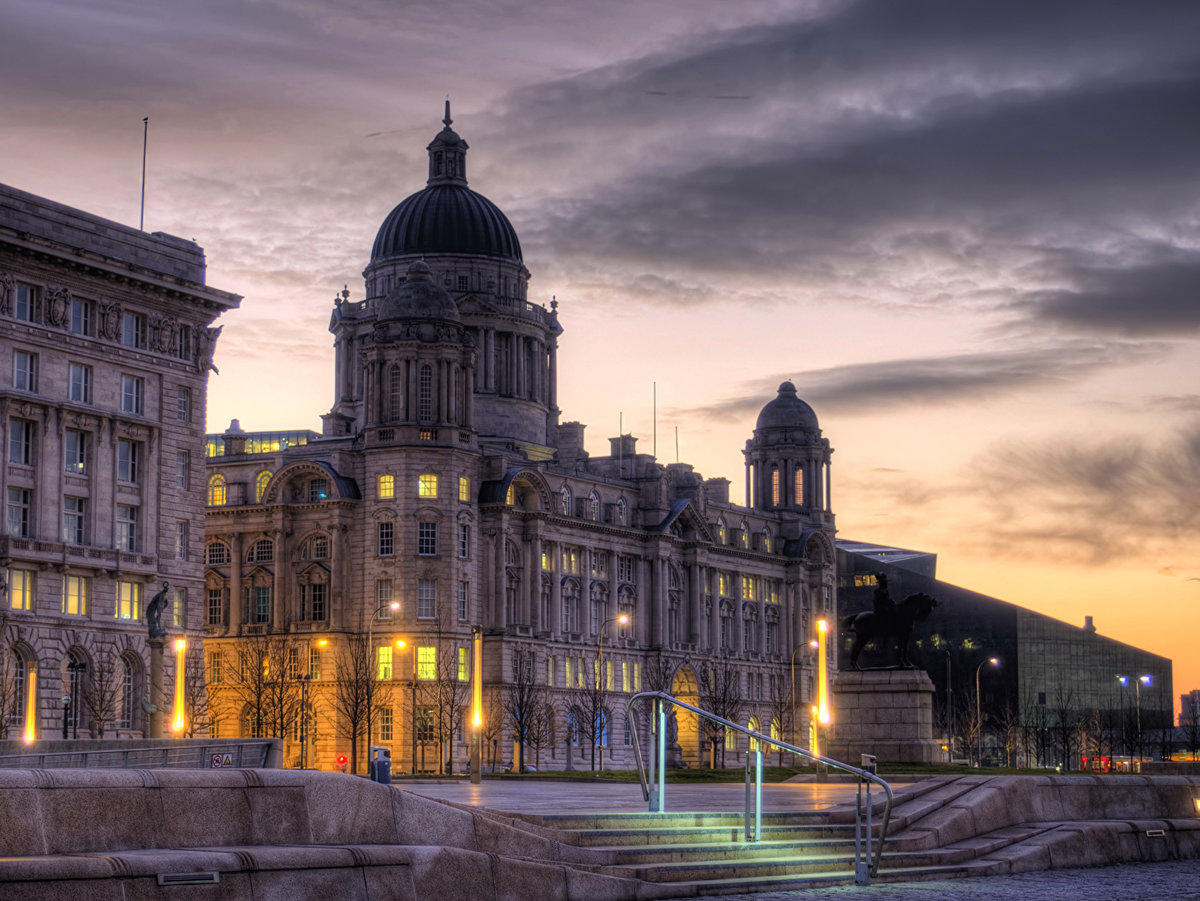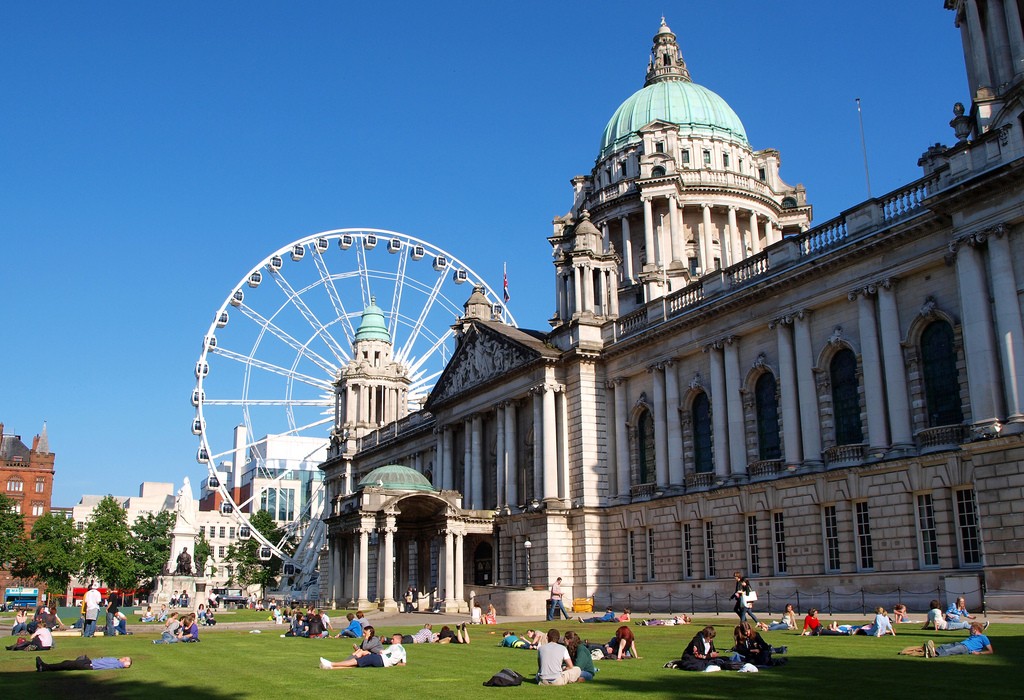

| Cruise Region :
Europe Northern Europe |
| Company Category : Standard |
| Company name : Royal Caribbean International |
| Ship name : Anthem of the Seas |
| Journey Start Date : Wed 20 Oct 2021 |
| Journey End Date : Mon 25 Oct 2021 |
| Port start : Southampton / Great Britain |
| Port end : Southampton / Great Britain |
| Count Nights : 5 nights |
| Day | Port | Date | Arrival | Departure |
|---|---|---|---|---|
| 1 | Southampton / Great Britain | Wed 20 Oct | 18:00 | |
| 2 | Day at sea / Sea | Thu 21 Oct | ||
| 3 | Liverpool / Great Britain | Fri 22 Oct | 08:00 | 18:00 |
| 3 | Liverpool / Great Britain | Fri 22 Oct | 08:00 | 17:00 |
| 3 | Liverpool / Great Britain | Fri 22 Oct | 06:00 | 17:30 |
| 4 | Belfast / Great Britain | Sat 23 Oct | 08:40 | 19:25 |
| 4 | Belfast / Great Britain | Sat 23 Oct | 08:00 | 17:00 |
| 4 | Belfast / Great Britain | Sat 23 Oct | 04:50 | 21:30 |
| 5 | Day at sea / Sea | Sun 24 Oct | ||
| 6 | Southampton / Great Britain | Mon 25 Oct | 05:30 |
| Build Year : 2015 |
| Length : 3478.00 |
| Speed : 22.00 |
| Capacity : 4180 |
| Deck Quantity : 18 |
Accommodation in a cabin of the selected category;
All-inclusive meals (except for alternative restaurants);
non-ferrous drinks: water, tea, coffee at self-service points on the ship;
cultural program on board: evening shows, theater, live music, etc.;
visiting nightclubs and discos;
active entertainment on board;
visiting the library;
participation of children in children's clubs;
visiting swimming pools and jacuzzi;
gym and sports court;
steward services and cabin cleaning;
port fees and taxes.
air travel;
transfers;
visas along the route;
hotel before and after the cruise (if necessary);
tips for staff*;
alternative restaurants;
alcoholic and some non-alcoholic drinks;
Internet and telephone on board;
casino on board;
laundry/dry cleaning services;
beauty salon, SPA center;
excursions in ports (optional).
*The size of the tip depends on the chosen cabin category:
Interior cabin/window/balcony/Junior suite – $18.00 /person/night
Suite (except Junior Suite) – $20.50 /person/night

Southampton is the largest city in the ceremonial county of Hampshire, England. It is 69 miles (111 km) south-west of London and 15 miles (24 km) west north-west of Portsmouth. Southampton is a major port and the closest city to the New Forest. It lies at the northernmost point of Southampton Water at the confluence of the Rivers Test and Itchen, with the River Hamble joining to the south of the urban area. The city, which is a unitary authority, has an estimated population of 253,651. The city's name is sometimes abbreviated in writing to "So'ton" or "Soton", and a resident of Southampton is called a Sotonian.
Significant employers in the city include Southampton City Council, the University of Southampton, Solent University, Southampton Airport, Ordnance Survey, BBC South, the NHS, ABP and Carnival UK. Southampton is noted for its association with the RMS Titanic, the Spitfire and more generally in the World War II narrative as one of the departure points for D-Day, and more recently as the home port of a number of the largest cruise ships in the world. Southampton has a large shopping centre and retail park, Westquay. In 2014, the city council approved a neighbouring followup Westquay South which opened in 2016–2017.
In the 2001 census Southampton and Portsmouth were recorded as being parts of separate urban areas; however by the time of the 2011 census they had merged apolitically to become the sixth-largest built-up area in England with a population of 855,569. This built-up area is part of the metropolitan area known as South Hampshire, which is also known as Solent City, particularly in the media when discussing local governance organisational changes. With a population of over 1.5 million this makes the region one of the United Kingdom's most populous metropolitan areas.


Liverpool is a city in North West England, with an estimated population of 491,500 in 2017. Its metropolitan area is the fifth largest in the UK, with a population of 2.24 million in 2011. The City of Liverpool City Council is the most populous city of Liverpool City District.
It is a country where the county of Lancashire is located. It became a borough in 1207 and a city in 1880. In 1889, it became a county borough independent of Lancashire. The industrial revolution has been Along with cargo, freight, freight, raw materials, such as coal and cotton, were involved in the Atlantic slave trade. In the 19th century, it was a major departure for Irish and English emigrants to North America. The RMS Titanic, the RMS Lusitania, the RMS Queen Mary and the RMS Olympic Line.
There is no need for a lot of money. League of football clubs, Liverpool and Everton matches The Grand National Horse Race takes place annually at Aintree Racecourse on the outskirts of the city.
Celebrated in 2007. In 2008, it was nominated by the European Capital of Culture together with Stavanger, Norway. [9] The Liverpool Maritime Mercantile City includes the Pier Head, Albert Dock, and William Brown Street. It has been one of the most diverse cities of the world. The city is also the home of the oldest Chinese community in Europe.
Liverpool and colloquially as "scousers", a reference to "scouse", and a form of stew. The word "Scouse" has also become synonymous with the Liverpool accent and dialect.

Liverpool is a city in North West England, with an estimated population of 491,500 in 2017. Its metropolitan area is the fifth largest in the UK, with a population of 2.24 million in 2011. The City of Liverpool City Council is the most populous city of Liverpool City District.
It is a country where the county of Lancashire is located. It became a borough in 1207 and a city in 1880. In 1889, it became a county borough independent of Lancashire. The industrial revolution has been Along with cargo, freight, freight, raw materials, such as coal and cotton, were involved in the Atlantic slave trade. In the 19th century, it was a major departure for Irish and English emigrants to North America. The RMS Titanic, the RMS Lusitania, the RMS Queen Mary and the RMS Olympic Line.
There is no need for a lot of money. League of football clubs, Liverpool and Everton matches The Grand National Horse Race takes place annually at Aintree Racecourse on the outskirts of the city.
Celebrated in 2007. In 2008, it was nominated by the European Capital of Culture together with Stavanger, Norway. [9] The Liverpool Maritime Mercantile City includes the Pier Head, Albert Dock, and William Brown Street. It has been one of the most diverse cities of the world. The city is also the home of the oldest Chinese community in Europe.
Liverpool and colloquially as "scousers", a reference to "scouse", and a form of stew. The word "Scouse" has also become synonymous with the Liverpool accent and dialect.

Liverpool is a city in North West England, with an estimated population of 491,500 in 2017. Its metropolitan area is the fifth largest in the UK, with a population of 2.24 million in 2011. The City of Liverpool City Council is the most populous city of Liverpool City District.
It is a country where the county of Lancashire is located. It became a borough in 1207 and a city in 1880. In 1889, it became a county borough independent of Lancashire. The industrial revolution has been Along with cargo, freight, freight, raw materials, such as coal and cotton, were involved in the Atlantic slave trade. In the 19th century, it was a major departure for Irish and English emigrants to North America. The RMS Titanic, the RMS Lusitania, the RMS Queen Mary and the RMS Olympic Line.
There is no need for a lot of money. League of football clubs, Liverpool and Everton matches The Grand National Horse Race takes place annually at Aintree Racecourse on the outskirts of the city.
Celebrated in 2007. In 2008, it was nominated by the European Capital of Culture together with Stavanger, Norway. [9] The Liverpool Maritime Mercantile City includes the Pier Head, Albert Dock, and William Brown Street. It has been one of the most diverse cities of the world. The city is also the home of the oldest Chinese community in Europe.
Liverpool and colloquially as "scousers", a reference to "scouse", and a form of stew. The word "Scouse" has also become synonymous with the Liverpool accent and dialect.

Belfast is a port city in the United Kingdom and the capital city of Northern Ireland, on the banks of the River Lagan on the east coast of Ireland. It is the largest city in Northern Ireland and second largest on the island of Ireland. It had a population of 333,871 in 2015.
By the early 1800s Belfast was a major port. It played a key role in the Industrial Revolution, becoming the biggest linen producer in the world, earning it the nickname "Linenopolis". By the time it was granted city status in 1888, it was a major centre of Irish linen production, tobacco-processing and rope-making. Shipbuilding was also a key industry; the Harland and Wolff shipyard, where the RMS Titanic was built, was the world's biggest shipyard. It also has a major aerospace and missiles industry. Industrialisation and the inward migration it brought made Belfast Ireland's biggest city and it became the capital of Northern Ireland following the Partition of Ireland in 1922. Its status as a global industrial centre ended in the decades after the Second World War.
Belfast suffered greatly in the Troubles, and in the 1970s and 1980s was one of the world's most dangerous cities. However, the city is now considered to be one of the safest within the United Kingdom. Throughout the 21st century, the city has seen a sustained period of calm, free from the intense political violence of former years and has benefitted from substantial economic and commercial growth. Belfast remains a centre for industry, as well as the arts, higher education, business, and law, and is the economic engine of Northern Ireland. Belfast is still a major port, with commercial and industrial docks dominating the Belfast Lough shoreline, including the Harland and Wolff shipyard. It is served by two airports: George Best Belfast City Airport, and Belfast International Airport 15 miles (24 km) west of the city. It is listed by the Globalization and World Cities Research Network (GaWC) as a Gamma global city.

Belfast is a port city in the United Kingdom and the capital city of Northern Ireland, on the banks of the River Lagan on the east coast of Ireland. It is the largest city in Northern Ireland and second largest on the island of Ireland. It had a population of 333,871 in 2015.
By the early 1800s Belfast was a major port. It played a key role in the Industrial Revolution, becoming the biggest linen producer in the world, earning it the nickname "Linenopolis". By the time it was granted city status in 1888, it was a major centre of Irish linen production, tobacco-processing and rope-making. Shipbuilding was also a key industry; the Harland and Wolff shipyard, where the RMS Titanic was built, was the world's biggest shipyard. It also has a major aerospace and missiles industry. Industrialisation and the inward migration it brought made Belfast Ireland's biggest city and it became the capital of Northern Ireland following the Partition of Ireland in 1922. Its status as a global industrial centre ended in the decades after the Second World War.
Belfast suffered greatly in the Troubles, and in the 1970s and 1980s was one of the world's most dangerous cities. However, the city is now considered to be one of the safest within the United Kingdom. Throughout the 21st century, the city has seen a sustained period of calm, free from the intense political violence of former years and has benefitted from substantial economic and commercial growth. Belfast remains a centre for industry, as well as the arts, higher education, business, and law, and is the economic engine of Northern Ireland. Belfast is still a major port, with commercial and industrial docks dominating the Belfast Lough shoreline, including the Harland and Wolff shipyard. It is served by two airports: George Best Belfast City Airport, and Belfast International Airport 15 miles (24 km) west of the city. It is listed by the Globalization and World Cities Research Network (GaWC) as a Gamma global city.

Belfast is a port city in the United Kingdom and the capital city of Northern Ireland, on the banks of the River Lagan on the east coast of Ireland. It is the largest city in Northern Ireland and second largest on the island of Ireland. It had a population of 333,871 in 2015.
By the early 1800s Belfast was a major port. It played a key role in the Industrial Revolution, becoming the biggest linen producer in the world, earning it the nickname "Linenopolis". By the time it was granted city status in 1888, it was a major centre of Irish linen production, tobacco-processing and rope-making. Shipbuilding was also a key industry; the Harland and Wolff shipyard, where the RMS Titanic was built, was the world's biggest shipyard. It also has a major aerospace and missiles industry. Industrialisation and the inward migration it brought made Belfast Ireland's biggest city and it became the capital of Northern Ireland following the Partition of Ireland in 1922. Its status as a global industrial centre ended in the decades after the Second World War.
Belfast suffered greatly in the Troubles, and in the 1970s and 1980s was one of the world's most dangerous cities. However, the city is now considered to be one of the safest within the United Kingdom. Throughout the 21st century, the city has seen a sustained period of calm, free from the intense political violence of former years and has benefitted from substantial economic and commercial growth. Belfast remains a centre for industry, as well as the arts, higher education, business, and law, and is the economic engine of Northern Ireland. Belfast is still a major port, with commercial and industrial docks dominating the Belfast Lough shoreline, including the Harland and Wolff shipyard. It is served by two airports: George Best Belfast City Airport, and Belfast International Airport 15 miles (24 km) west of the city. It is listed by the Globalization and World Cities Research Network (GaWC) as a Gamma global city.


Southampton is the largest city in the ceremonial county of Hampshire, England. It is 69 miles (111 km) south-west of London and 15 miles (24 km) west north-west of Portsmouth. Southampton is a major port and the closest city to the New Forest. It lies at the northernmost point of Southampton Water at the confluence of the Rivers Test and Itchen, with the River Hamble joining to the south of the urban area. The city, which is a unitary authority, has an estimated population of 253,651. The city's name is sometimes abbreviated in writing to "So'ton" or "Soton", and a resident of Southampton is called a Sotonian.
Significant employers in the city include Southampton City Council, the University of Southampton, Solent University, Southampton Airport, Ordnance Survey, BBC South, the NHS, ABP and Carnival UK. Southampton is noted for its association with the RMS Titanic, the Spitfire and more generally in the World War II narrative as one of the departure points for D-Day, and more recently as the home port of a number of the largest cruise ships in the world. Southampton has a large shopping centre and retail park, Westquay. In 2014, the city council approved a neighbouring followup Westquay South which opened in 2016–2017.
In the 2001 census Southampton and Portsmouth were recorded as being parts of separate urban areas; however by the time of the 2011 census they had merged apolitically to become the sixth-largest built-up area in England with a population of 855,569. This built-up area is part of the metropolitan area known as South Hampshire, which is also known as Solent City, particularly in the media when discussing local governance organisational changes. With a population of over 1.5 million this makes the region one of the United Kingdom's most populous metropolitan areas.